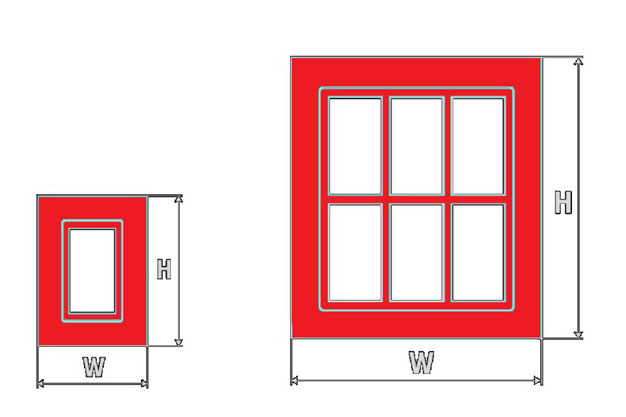Cable and pipe penetrations: UK21/F019
Adopted EU recommendation FIRE-063. UK approved recommendation on the criteria for determining test specimen sizes for cable penetrations and pipe penetrations with single frames and multiple or combination frames.
Question
The Fire Test Procedures (FTP) Code requires the minimum and maximum size of cable penetrations and pipe penetrations to be tested. It is concluded that the above requirement applies to cable penetrations and pipe penetrations with single frames and multiple/combination frames. Accordingly, if a penetration size range includes single frames and multiple/combination frames, the minimum size of single frame and the maximum size of multiple/combination frame in the range shall be tested. In other words, the minimum and maximum size of penetrations in a range should be determined based on the total cross-sectional area of the penetration device.
Is the above interpretation correct?
Recommendation
Each type of cable penetration and pipe penetration with single frame or multiple frames (often referred to as combination frames) shall be tested using their minimum and maximum sizes in both vertical (bulkhead) and horizontal (deck) orientations. The smallest and the largest penetration sizes, including those with multiple/combination frames, shall be selected as test specimen sizes based on their minimum and maximum linear dimensions (for example, minimum and maximum width and height or diameter) and not based on their cross-sectional areas.
The cable penetration and pipe penetration type is defined by its composition and structure as well as its geometrical shape. This means that for instance rectangular and circular shaped penetrations are considered as different types, and each type for which approval is sought shall be tested with its minimum.
Appendix 1: Criteria for determining test specimen sizes for cable penetrations and pipe penetrations with single frame and multiple or combination frames

References
- 2010 FTP Code
- MSN 1874 as amended
- The Merchant Shipping (Marine Equipment) Regulations 2016 as amended
Items affected
- UK/3.26, Penetrations through “A” class divisions
- UK/3.27, Penetrations through “B” class divisions
- UK/3.37, Penetrations through fire resisting divisions on high speed craft
More information
Maritime and Coastguard Agency
Bay 2/21
Spring Place
105 Commercial Road
Southampton
SO15 1EG
Telephone: +44 (0) 203 817 2000
Email: MEQA@mcga.gov.uk
Website: www.gov.uk/mca